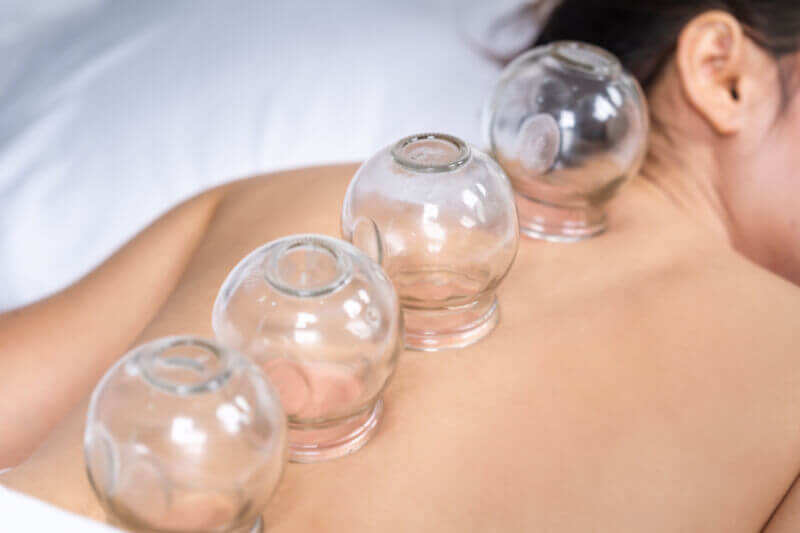Acupuncture
Acupuncture is a traditional Chinese medical practice that involves inserting thin needles into specific points on the body to promote healing and alleviate pain.
It is often used to treat various conditions, including chronic pain, musculoskeletal issues, headaches, nausea, and stress.
The insertion of needles is thought to stimulate the body’s natural healing processes and restore the balance of energy.


Cupping
Cupping is an ancient healing practice that involves placing cups on the skin to create a suction effect.
It’s believed to have several potential benefits including:
- Improved Blood Circulation
- Muscle relaxation
- Pain Relief
- Detoxification
- Promotion of Qi Flow
It’s important to note that some individuals may experience temporary bruising or marks on the skin as a result of cupping, which is a normal response and usually fades within a few days.
Scraping (or Gua Sha)
Scraping (or Gua Sha) is a traditional Chinese healing technique that involves scraping the skin with a smooth-edged tool to promote blood circulation and the release of muscle tension.
It is commonly used to address various health issues in traditional Chinese medicine, including muscle pain, tension, and stagnation.
It is generally considered safe when performed by a trained practitioner, but it may not be suitable for everyone. People with certain skin conditions, bleeding disorders, or those taking blood-thinning medications should consult with a healthcare professional before undergoing Scraping.


Tui Na
Tui Na, often spelled as Tuina involves various massage techniques, acupressure, and joint manipulations to stimulate the flow of Qi (energy) in the body and promote overall balance and harmony.
Key features of Tui Na:
- Acupressure Points: Tui Na therapists apply pressure to specific acupressure points along the body’s meridians (energy channels) to release blockages and encourage the flow of Qi.
- Massage Techniques: Tui Na incorporates a variety of massage techniques, including kneading, rolling, pressing, and rubbing.
- Joint Manipulation: Tui Na may involve joint manipulations and stretches to improve flexibility and relieve tension.
- Soft Tissue Manipulation: The therapist may work on soft tissues, such as muscles and tendons, to release tension and improve circulation.
